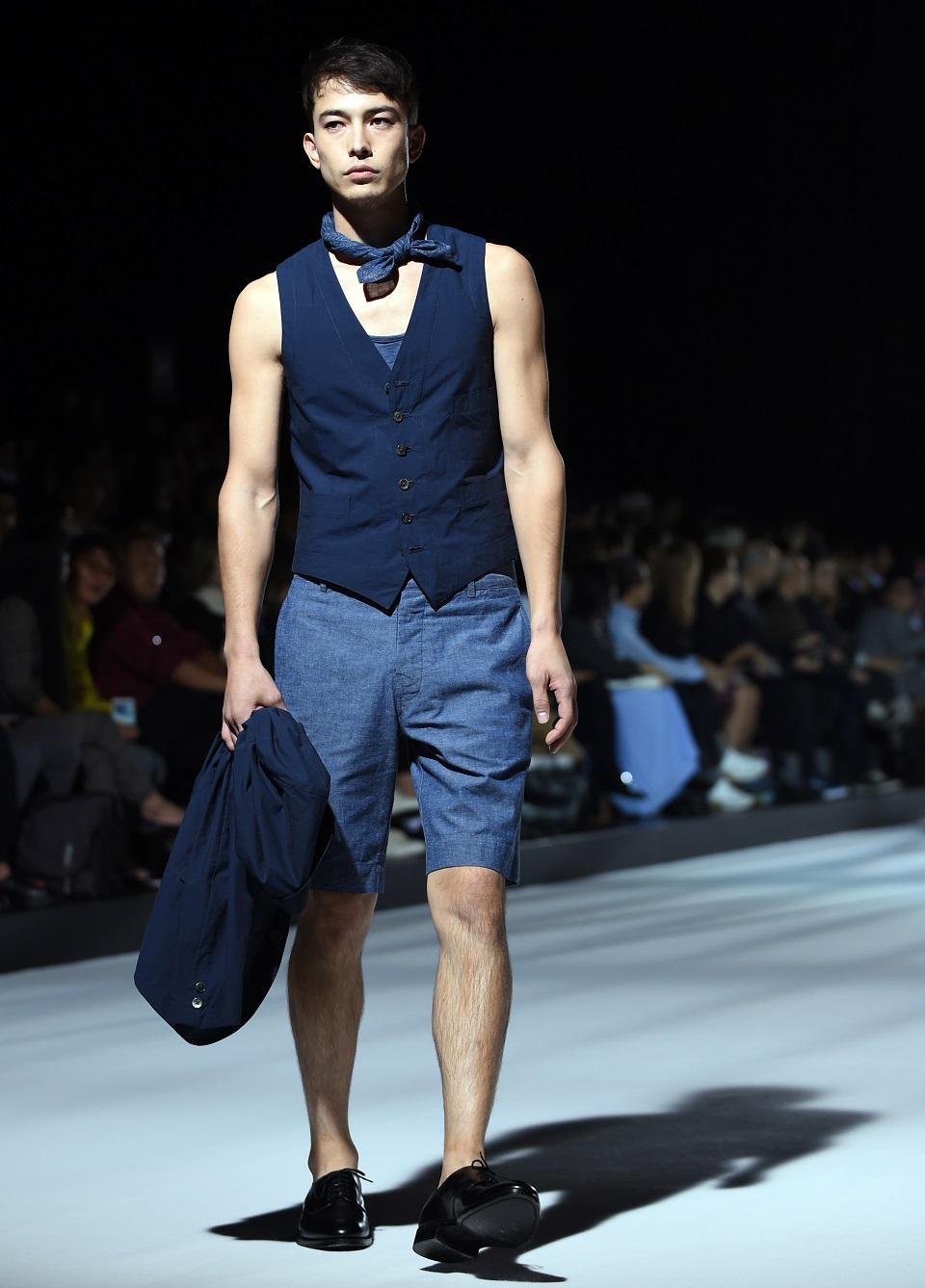Filtered By: Lifestyle
Lifestyle
TOKYO FASHION WEEK BEGINS
Tokyo fashion: Superior street style lost in transaction
By AMMU KANNAMPILLY, Agence France-Presse
TOKYO - Tokyo Fashion Week opened Monday with a show by a US designer, an arrangement observers say underlines the absence of local labels on the world stage despite the city's reputation for edgy streetwear and shaping global trends.

A model displays creations by US designer Todd Snyder during the Tokyo 2016 Spring/Summer Tokyo Fashion Week in Tokyo on October 12, 2015. Tokyo fashion week opened on October 12 with a show by the US designer, an arrangement observers say underlines the absence of local labels on the world stage despite the city's reputation for edgy streetwear and shaping global trends. AFP PHOTO/Toshifumi Kitamura
More than fifty fashion houses will exhibit their collections over the next six days, casting a spotlight on designers working with materials ranging from denim to handwoven silk.
"There is no shortage of design talent in Japan," said Akiko Shinoda, director of international affairs at Japan Fashion Week Organization, which is responsible for the event.
"Unfortunately many designers and textile houses are still quite unknown outside Japan, [so] we need to promote them," Shinoda told AFP.
Miss #eimikuroda in Todd Snyder SS16 @mbfwtokyo @toddsnyderjp #mbfwtokyo #mbfwt #wwdjfw
A photo posted by Todd Snyder (@toddsnyderny) on
A video posted by Todd Snyder (@toddsnyderny) on
At times Tokyo's pavements feel like their own catwalks, with youngsters sporting an array of weird and wonderful ensembles.
Beanie hats worn by girls high on their head seem to be everywhere this autumn, even with the mercury still in the mid twenties.
But while Tokyo's fashionistas are applauded by bloggers and columnists worldwide for their daring and sophistication, the wealth of street style inspiration hasn't translated into big business -- for Japanese designers anyway.
Frenchman Loic Bizel was among the first style hunters to cash in on Tokyo's unique status as a laboratory of trends back in 2001.
"This city is so ahead of the curve when it comes to fashion, trends begin here and then months later, maybe even a year later, they go global," Bizel told AFP.
The Tokyo-based trend-spotter plays a key role in this process.
For anywhere between $700-$1,200 a day, he takes clients representing retail giants like H&M, Nordstrom and Zara on a tour of Tokyo's most edgy boutiques, tucked away along quiet side lanes and often known only to fashion insiders.
Bizel's clients pay big bucks to his company, Tokyo Fashion Tour, to scout inspiration.
"In one case, we had buyers from Primark who must have bought some $20,000 worth of samples in a single day, in the end they had to buy extra suitcases to carry all the stuff," Bizel said.
Faked in China
All too often trend-setting designs from boutique Tokyo shops are adapted or even copied outright, particularly by Chinese manufacturers, for a fraction of the original cost.
"Most Japanese designers work on a small scale, they don't have patent protection or legal teams who can fight back so it's easy for big brands to copy their designs and make money from it."
Industry veterans like Shinoda acknowledge the severity of the situation and say they are pushing local designers to secure their trademarks and protect their labels against fraud.
"Unfortunately we see many instances of our designers' logos being copied and trademarks being registered by companies in China," she said.
"We have to find a solution."
Traditionally Japanese designers—with notable exceptions like Issey Miyake, Kenzo and Comme des Garçons' Rei Kawakubo—have not paid much attention to overseas markets, either in terms of brand protection or sales.
"For a long time... the fashion industry in Japan did consistent and sufficient business solely in the domestic market, so there was no need [to pursue] international markets," said Izumi Miyachi, deputy managing editor of Yomiuri Shimbun newspaper.
The country's chronic birth rate drop however has prompted a slowdown in domestic consumption, Miyachi told AFP.
As a result, Japan's apparel industry has shrunk, declining by 10.3 percent between 2013 and 2014.
Imports have risen steadily over the last decade while Japanese designers with global ambitions—from legends like Yohji Yamamoto to thriving new label, Sacai—prefer to stage shows in Paris instead of Tokyo.
But that doesn't worry the organizers of Tokyo fashion week.
"We can't compete with Paris, Milan or New York," Shinoda said.
"But what we can do is provide a platform for young designers who are starting their careers." — AFP
More Videos
Most Popular




